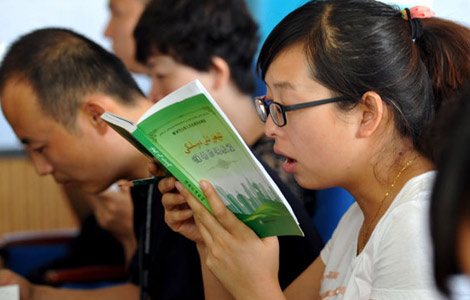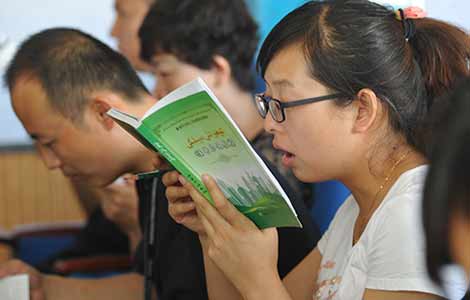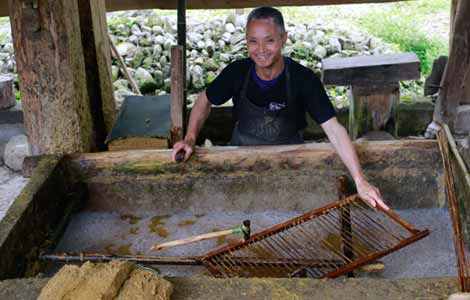PBOC money input: Still too conservative
Updated: 2013-08-09 07:25
By Mike Bastin (China Daily)
|
|||||||||||
China's central bank, the People's Bank of China, continued to inject liquidity into the banking system on Tuesday, with 12 billion yuan ($1.96 billion) of seven-day reverse repurchase agreement (repo) operations. The injection is the third since last Tuesday when the central bank resumed the reverse repo sales after a suspension of about six months.
On July 30 for the first time since February this year the central bank actually injected funds into China's decelerating economy instead of draining them. The injection, however, a 17 billion yuan issuance of seven-day reverse bond repurchase agreements, is comparatively small and the official guidance rate is high.
While it is far too early to read too much into the injections, it certainly marks a possible shift in the central bank's approach to the management of money market conditions.
Cash squeeze
Only in June this year, the central bank chose not to intervene when a severe cash squeeze sent the markets into panic mode.
This was interpreted as a warning sign against risky lending practices and an attempt to force local lenders to rein in rampant credit growth
So why the injections and what impact could this have on China's short-term economic outlook?
Two possible reasons could lie behind the injections at this time of the year. The first is the fact that at this time in the financial year many Chinese companies and banks are readying themselves for dividend payments and preparing to publish financial results, both of which increase the need for cash and other liquid funds. The second contributory factor could be that the central bank aims to guide the market borrowing costs to a lower level.
In effect, the central bank has made it clear that it will ensure sufficient market liquidity but that the days of easy money are well and truly over and liquidity has to be priced at a level that encourages responsible lending.
The markets' initial reaction has been positive. But while this certainly will lead to more prudent lending, alone such a fiscal fillip is unlikely to produce any short- or long-term economic benefit.
Risk reduction in lending practices is extremely welcome and certainly the central bank appears to be on permanent guard with a zero-tolerance approach. But risk reduction does not necessarily lead to lending which fuels growth in sales and market share, domestically or overseas.
'Double whammy'
In order achieve the "double whammy" of risk reduction and lending that results in business expansion that fuels economic growth, the central bank and central government need to adopt an even more interventionist stance.
In much the same way that the Japanese government, via the Japanese Ministry of Trade and Industry, acted as an export market research unit, now is precisely the time for China's central government and central bank to act out the very same scenario.
Policies that force more careful lending need to be supported, therefore, with incentives for lending activity channeled into industries in which clear competitive advantage in certain, attractive (export and domestic) markets has been identified. This is the role required of the central bank, which remains far too laissez-faire in its current remit.
Early establishment of a high-level "target market" team at the central bank is the first step in this new role. Various trade finance programs can then follow the formation of this team.
Partial guarantees
Under such trade finance programs the government and central bank would provide partial guarantees to accredited lenders covering the credit risk arising from approved export finance facilities such as trade loans, letters of credit and export bonds.
Despite this welcome cash injection, it is central bank conservatism that represents the real issue.
If the People's Bank of China really intends to serve the people then a far greater integrative role with companies and markets is required, urgently.
The author is a researcher at Nottingham University's School of Contemporary Chinese Studies.
Related Stories
PBOC repo move aims to aid credit supply, cut rates 2013-07-31 07:22
Floor on lending rates axed by PBOC 2013-07-20 00:40
PBOC's caution amid cash crunch will pay off 2013-06-28 14:50
PBOC to maintain 'prudent' monetary policy: Zhou Xiaochuan 2013-06-28 13:04
PBOC ends credit crunch, needs to go further 2013-06-27 09:09
Today's Top News
China's inflation rises 2.7% in July
Budget show cuts in provincial spending
Trade data improve economic prospects
Pharm giant suspected of bribery
Beijing rejects protest over patrol
China Unicom tests 4G network
Switching tactics in ambitious new move
US realty market 'connects dots' with China buyers
Hot Topics
Lunar probe , China growth forecasts, Emission rules get tougher, China seen through 'colored lens', International board,
Editor's Picks

|

|

|

|

|

|





